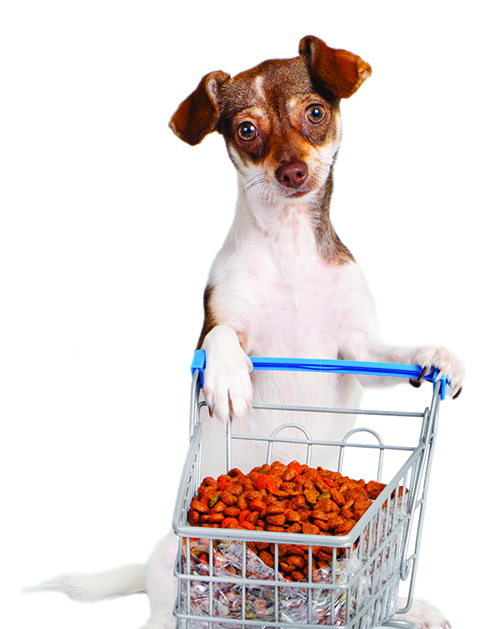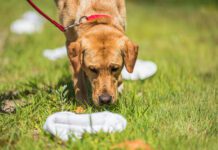The beginning of your dog food buying journey actually starts with what you feed your dog right now. You are feeding your dog something already, correct? Good! In order to make choices that will maintain or, better yet, improve your dog’s health, you need to know what’s in the food you already feed him. Otherwise, how can you make sound comparisons to new products? The first steps are:
1. Go look at the bag of food you are feeding your dog – and bring a pen and paper, or your cell phone, with you. Write down (or take a picture of) the ingredients list and the “guaranteed analysis” – the place on the label that lists how much protein and fat the food contains (among other things).
2. Make sure you know what the major ingredients are in your dog’s food; don’t just go by the name of the food. A food that says it’s the company’s “Chicken and Rice Variety” may also contain fish meal, for example. That’s fine, unless fish makes your dog itchy!
Also, don’t take for granted that the formula of a food that suits your dog particularly well is the same as it’s always been; manufacturers often change their formulas from year to year, based on ingredient availability and cost. Many of us with dogs who are allergic to or intolerant of certain ingredients have been unpleasantly surprised by our dogs breaking out in hives or itching, only to discover (too late) that the ingredients of a formerly “safe” food have been changed and now contain an ingredient that is problematic for our dog.
3. Now ask yourself a question: Are you happy with your dog’s condition? Is his weight perfect? Or is he too fat or too thin? (By the way, we wouldn’t take your vet’s silence on this matter as a sign that your dog is perfect; in our experience, few vets choose to get into this matter with their clients unless/until a dog is morbidly obese or super thin and bony. And we’ve seen vets show far more concern over thin, fit dogs than fat, unfit dogs. Go figure.)
If you are pretty sure your dog is over his healthy weight, you should start your search for new foods with products that contain less fat – or, at most, the same amount of fat – that’s in the food you give him now. To put it differently: If you think he is overweight or on his way there, don’t buy a food that contains even more fat than what you feed him now.
In contrast, if you think your dog is too thin and has a hard time gaining weight, you probably should consider some foods that contain more fat than what you feed him currently.
If your dog is at an ideal weight, you should look for foods that contain around the same amount of fat and protein as you feed him now.
4. One more question: Does your dog have any health problems? Recurrent diarrhea or loose stools? Constant flatulence? Chronic itching? Excessive shedding? Ear infections? If so, consider looking for foods that contain different protein and carbohydrate sources than those found in the foods you currently feed. In order to do so, before you go shopping, you need to know what’s in the products you regularly feed your dog.
If, let’s say, your dog has terrible diarrhea or chronic ear infections and you ordinarily feed him foods that contain chicken and rice, look for foods that contain no chicken or rice – perhaps ones that contain beef and barley, for instance.
You should also be aware of whether your dog has a predisposition to a health problem that can be precipitated or aggravated by diets with certain characteristics, so you can avoid foods with those attributes.
For example, Bedlington Terriers, Doberman Pinschers, West Highland White Terriers, Skye Terriers, and Labrador Retrievers are susceptible to copper storage hepatopathy; they should be fed diets with low levels of copper – as close as possible to the minimum required by the AAFCO Dog Food Nutrient Profiles.
READY TO SHOP
At this point, you should be much more knowledgeable about your dog’s current food than you were previously; you should also know what details to look for on the labels of some new foods to try. Now you’re ready to shop! Just don’t forget to bring the notes or pictures you took of your dog’s current food ingredients, GA, and AAFCO statement for comparison.

Related Posts
Whole Dog Journal’s Approved Dry Dog Food List
Whole Dog Journal’s Approved Dry Dog Foods for 2020
Rotation, Rotation, Rotation: Choose Several Dog Foods
The Best Foods for Your Dog






